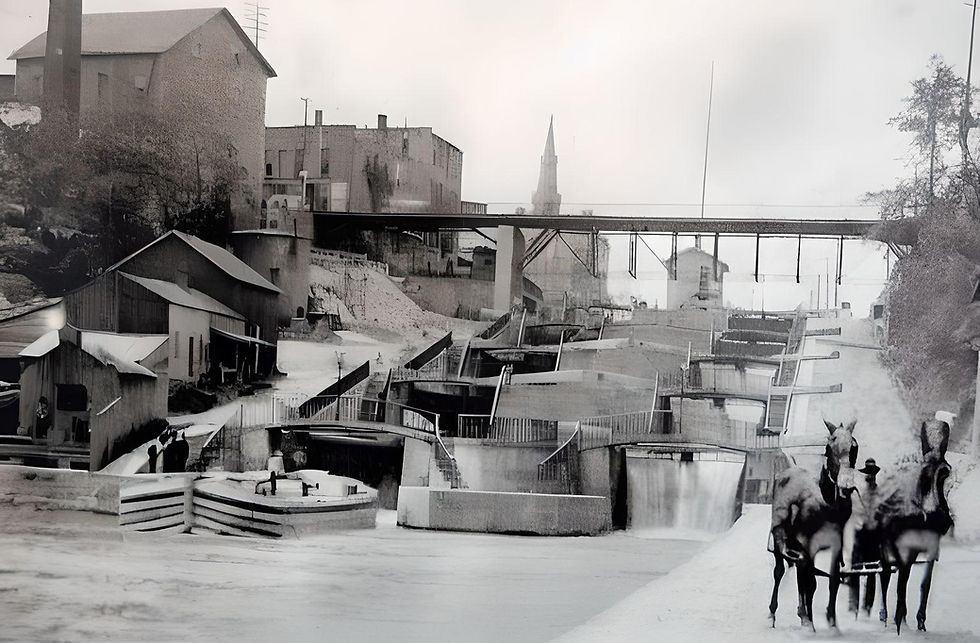The Erie Canal: A Historic Waterway Shaping Niagara Falls and Beyond
- Niagara Action
- May 15, 2024
- 2 min read

The Erie Canal, a monumental feat of engineering and most vital waterway in American history, has played a significant role in shaping the development of Niagara Falls and the surrounding region. With its famous 'Flight of Five Locks' located in Lockport, New York, visitors to the Niagara Region have the unique opportunity of experiencing history firsthand.
The construction of the Erie Canal began in 1817 and was completed in 1825. Led by engineer Canvass White, the canal spanned 363 miles, connecting the Hudson River in Albany to Lake Erie in Buffalo. The project involved the excavation of vast stretches of land, the construction of locks and aqueducts, and the coordination of thousands of workers. The canal's completion marked a significant achievement in American engineering and forever changed the landscape of the region.
The Erie Canal became immortalized in the popular folk song "Low Bridge, Everybody Down" (also known as "Fifteen Miles on the Erie Canal"). Written in the mid-19th century, the song captures the spirit of the canal and the hard work of the "mules" that pulled the barges along its waters. It has become an enduring symbol of the canal's cultural significance and is often performed at festivals and events celebrating the Erie Canal's legacy.
The Erie Canal was constructed to address the need for a reliable and cost-effective transportation route between the East Coast and the Midwest. Prior to its construction, travel and trade were hindered by the rugged terrain and lack of navigable waterways. The canal provided a direct and efficient route, reducing transportation costs and opening up new markets for goods and agricultural products.
The completion of the Erie Canal revolutionized trade and transportation in the United States. It facilitated the movement of goods, connecting the agricultural heartland of the Midwest to the bustling markets of the East Coast. The canal's success spurred economic growth, as industries flourished along its banks, and towns and cities sprung up along its route. It also played a crucial role in the westward expansion of the United States as it provided a vital link between the Atlantic Ocean and the Great Lakes.
The Erie Canal had a notable impact on Niagara Falls tourism as well. The canal's construction facilitated trade and transportation, attracting visitors from throughout the East Coast and beyond to the Niagara region. The canal's presence contributed to the overall tourism appeal of the Niagara Falls area, offering visitors a chance to experience its rich history and natural beauty.
The Erie Canal continues to be of great importance today. It serves as a recreational waterway attracting boaters, kayakers, and cyclists who traverse its scenic path. The canal's historic significance is preserved through museums, interpretive centers, and historic sites that educate visitors about its impact on American history. Additionally, the canal system remains an essential component of New York State's transportation infrastructure, supporting commercial shipping and tourism.
The Erie Canal stands as a testament to human ingenuity and the transformative power of infrastructure. Its construction, immortalized in song, revolutionized trade and transportation, shaping the development of Niagara Falls and the surrounding region.
Today, the Erie Canal continues to be a cherished waterway, offering recreational opportunities and preserving the rich history of this remarkable engineering marvel.





